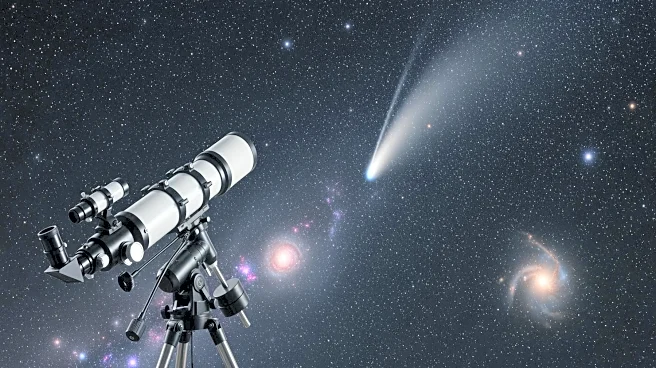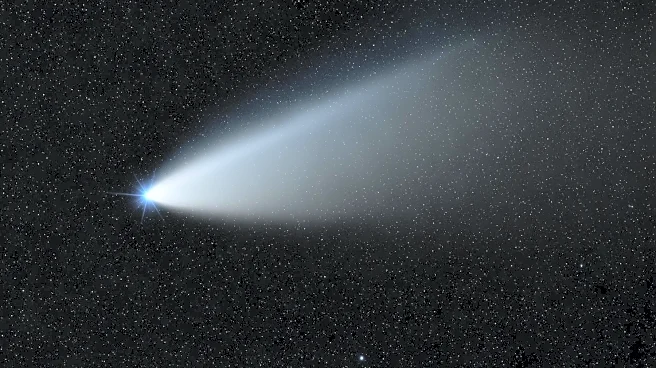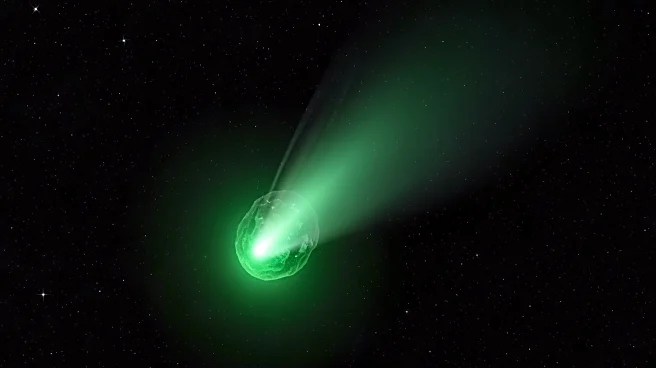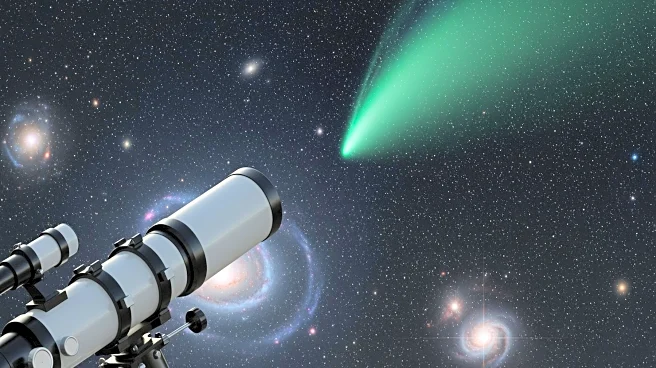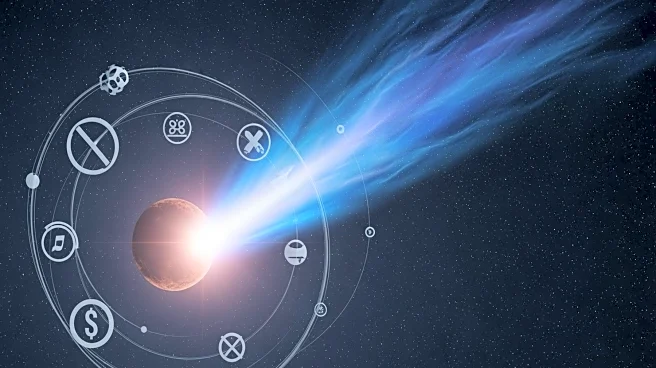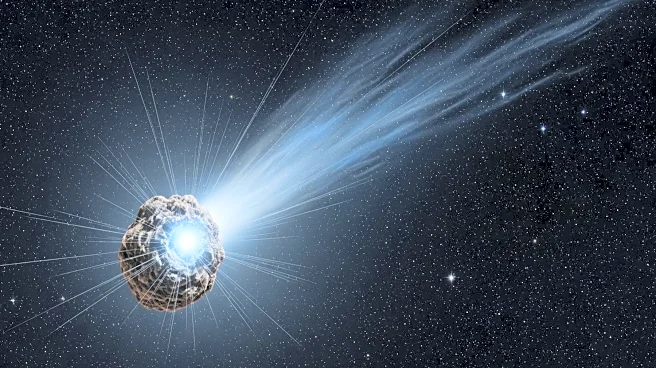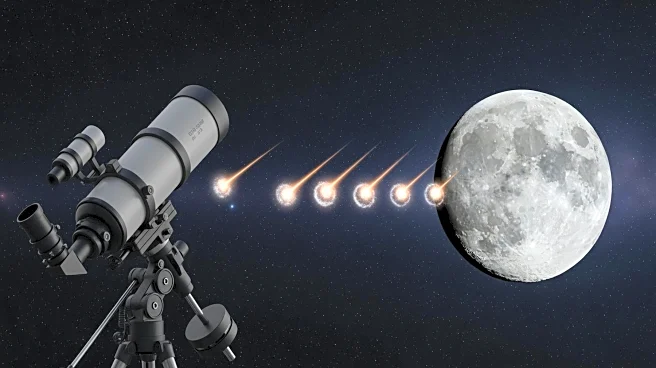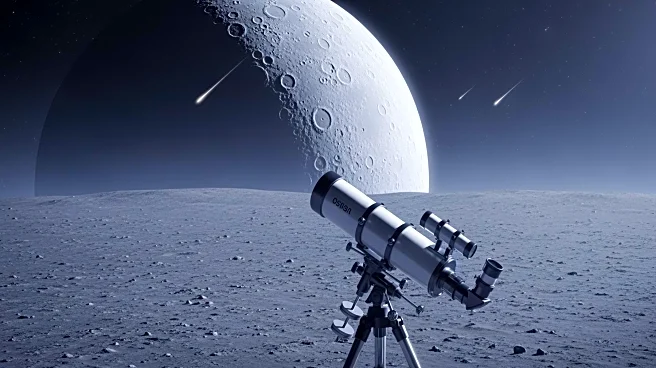What's Happening?
Astronomers are gearing up for the visibility of Comet 3I/ATLAS, an interstellar comet that is emerging from behind the Sun. Observers with large amateur telescopes may be able to detect the comet as a faint
fuzzy object in the east just before dawn. The comet's visibility will improve over the coming days, with its altitude increasing from 10° to 20° by November 16. The waning gibbous Moon may pose a challenge for visual observers initially, but conditions are expected to improve as the Moon transitions to a thin crescent. The comet will pass Gamma Virginis on November 17, providing a prime opportunity for observation.
Why It's Important?
The appearance of Comet 3I/ATLAS is significant for astronomers and enthusiasts as it offers a rare opportunity to observe an interstellar object. Such comets provide valuable insights into the composition and behavior of celestial bodies originating from outside our solar system. Observing this comet can enhance understanding of interstellar phenomena and contribute to ongoing research in astronomy. The event also highlights the importance of amateur astronomers in contributing to scientific discoveries, as their observations can complement professional research efforts.
What's Next?
As Comet 3I/ATLAS becomes more visible, astronomers and enthusiasts will continue to track its path and gather data. Observations will focus on its trajectory, brightness, and any changes in its appearance. The comet's passage near Gamma Virginis on November 17 will be a key moment for detailed observation. Researchers may analyze the data collected to better understand the characteristics of interstellar comets and their potential impact on our solar system. The event may also inspire further studies and discussions within the astronomical community.
Beyond the Headlines
The visibility of Comet 3I/ATLAS underscores the dynamic nature of our universe and the ongoing exploration of celestial phenomena. It raises questions about the origins and journeys of interstellar objects, potentially influencing theories about the formation and evolution of solar systems. The event also highlights the collaborative efforts between amateur and professional astronomers, showcasing the role of citizen science in advancing knowledge. As technology improves, the ability to observe and analyze such phenomena will continue to evolve, offering new opportunities for discovery.
